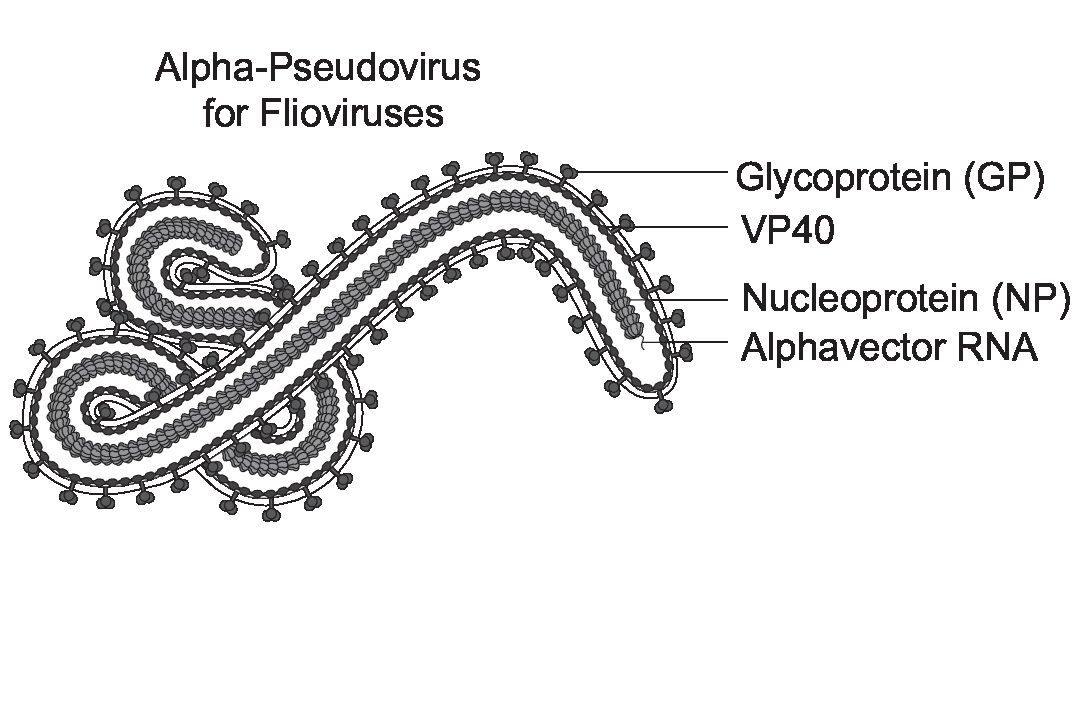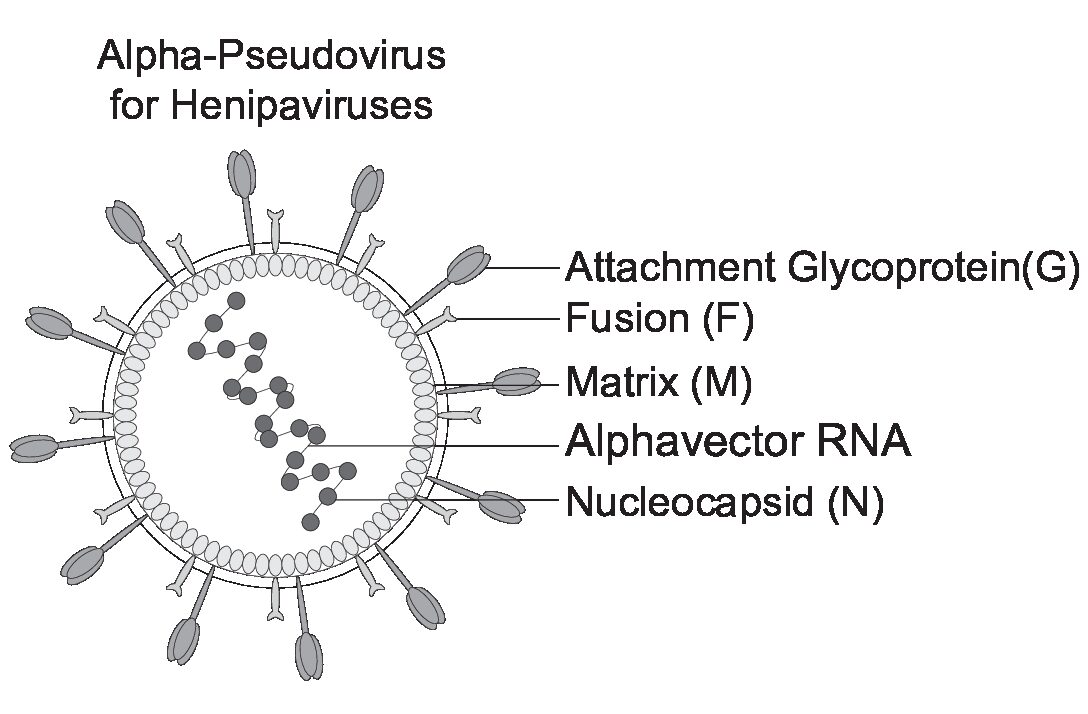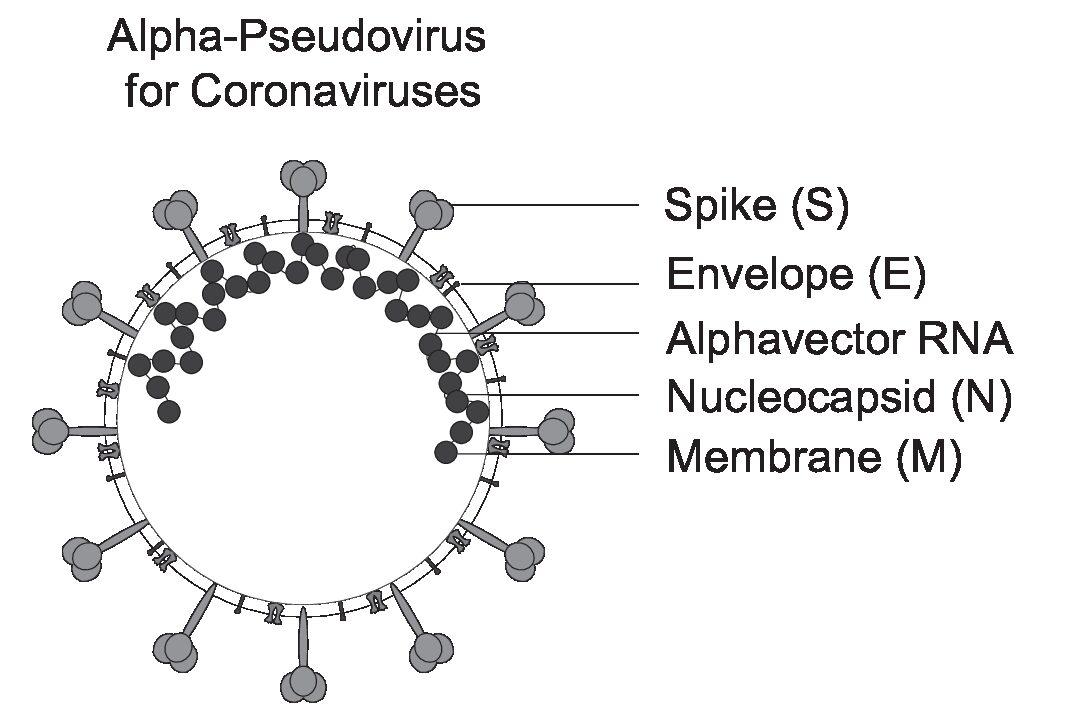Product Description
Product Description
Rapid Alpha-pseudovirus for Filoviruses
Filoviruses include Marburg and Ebolaviruses. Marburg virus hybrid alpha-pseudovirus is based on the MARV001 Isolate (Genbank: OL702894.1). Ebolavirus hybrid alpha-pseudoviruses are based on either the Zaire ebolavirus (Genbank: KJ660346.2) or the Sudan ebolavirus (Genbank: YP_138523.1) Gulu strain.
Applications:
- Marburg and Ebola pseudovirus transduction of target cells for viral entry and functional studies
- Rapid Anti-Marburg and Anti-Ebola drug screening
- Rapid Anti-Marburg and Anti-Ebola neutralizing antibody screening
A novel rapid hybrid alpha-pseudovirus for Marburg (MARV) and Ebolaviruses (EBOV) that are available for your initial testing. These pseudoviruses are BSL-2 safe and ready to use for studying viral entry. HA-MARV and HA-EBOV particles are pseudoviruses assembled from the structural proteins of the filovirus glycoprotein (GP), VP40 matrix protein, and the Nucleoprotein (NP) and package an alphaviral vector for reporter gene expression. The alpha-pseudoviruses are single-cycle viruses with self-replicating RNA for rapid quantification of neutralizing antibodies and entry-inhibiting drugs. Additionally, we help our customers to assemble HA-MARV and HA-EBOV pseudoviruses at any scale.
Additionally, we help our customers to assemble custom Marburg virus (MARV) and Ebolavirus (EBOV) pseudoviruses. These particles carry reporters that can be used for antiviral drug screening or the quantification of neutralizing antibodies or entry inhibitors. Please contact us by email: info@virongy.com
To enhance your pseudovirus entry, ask about receiving a free sample of our propriety InfectinTM which can significantly promote productive viral infection in a variety of host cells, enhancing viral infection rates by 3 to 20-fold.
Background:
Ebolavirus is the causative agent of ebolavirus disease (EDV) characterized by severe hemorrhagic fever. EVD is a disease of human and non-human primates that is characterized by a high fatality rate (30–90%). Ebolavirus is an enveloped, negative-stranded RNA virus characterized by a viron of ≈80 nm in diameter and a length ranging from hundreds of nanometers to micrometers. The genome encodes for seven structural proteins: the nucleoprotein (N), the virion protein (VP) 24, VP35, VP30, VP40, the glycoprotein (GP), and the RNA-dependent RNA polymerase (L). The virus enters the cell by fusion following the attachment of the viral Glycoprotein (GP) to the cell surface receptor Tim-1 and NPC1. This mechanism of entry allows for a broad host cell range.
Marburg virus is another member of the filovirus family and is known to cause severe and often fatal infections in humans. The Marburg glycoprotein (GP) shares similar entry mechanisms to the Ebolavirus (GP) and utilizes the same NPC1 receptor. NPC1 is an endosomal/lysosomal 13-pass transmembrane protein with three large luminal domains, A, C, and I, of which domain C (NPC1-C) on the surface of host cells.
Example of results:
Rapid HA-MARV alpha-pseudovirus luciferase transduction of VeroE6 cells (Left): VeroE6 cells were transduced with HA-MARV(Luc) alpha-pseudovirus (with a luciferase reporter). Reporter expression was quantified at 24 hours post-transduction (luciferase assay).
Rapid MARV alpha-pseudovirus GFP transduction of VeroE6 cells (Right): VeroE6 cells were transduced with HA-MARV(GFP) alpha-pseudovirus (with a GFP reporter). Reporter expression was quantified at 24 hours post-transduction (GFP flow cytometry).

Marburg and Ebola pseudoviruses are intended for Research Use Only and are not for diagnostic or therapeutic purposes or use in humans or animals.


 Alpha Pseudovirus – MSDS
Alpha Pseudovirus – MSDS






